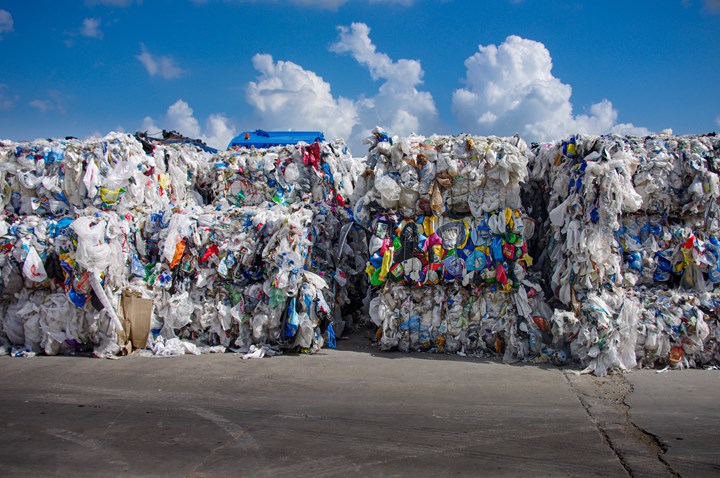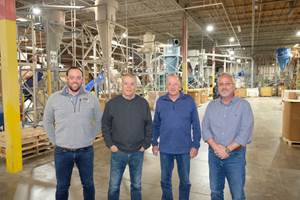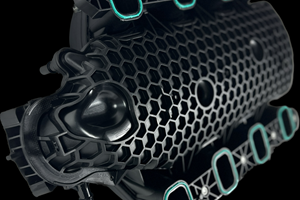DSM & SABIC to Create Recycled-Based Dyneema
Through a joint pilot project, the manufacturing and usage of Dyneema using mixed plastic waste as feedstock (via mass balance approach) will be successfully demonstrated.
Last year, we reported on a partnership between DSM, SABIC and Finland’s , a leading producer of sustainable raw materials, in order to reduce the environmental footprint of Dyneema ultrahigh molecular weight polyethylene (UHMW-PE) fiber, unidirectional (UD) reinforcements and fabric. That partnership represented an important step in DSM realizing the goal of sourcing at least 60% of its feedstock from biobased raw material by 2030.
DSM and SABIC have now announced that through a joint pilot project with multiple industry partners that are members of DSM’s CirculariTeam, the manufacturing and usage of Dyneema using mixed plastic waste as feedstock (via mass balance approach) will be successfully demonstrated. It is an important step toward the future goal of fully closing the loop by delivering Dyneema made from UHMW0PE waste. This collaboration underlines DSM’s and SABIC’s efforts to accelerate a circular economy for materials. By working together with members of CirculariTeam, DSM will produce recycled-based Dyneema made using SABIC’s certified circular ethylene as a pilot project in both a sailing rope and a pelagic trawl net application.

The circular ethylene, from SABIC’s Trucircle portfolio, uses mixed plastic waste as feedstock (mass balance approach), which not only contributes to preventing valuable plastic from becoming waste and the avoidance of carbon emissions compared to incineration, but it will also help preserve fossil resources. These pilots are an important early-stage milestone in the journey toward making fully circular Dyneema from HMW-PE postproduction and post-consumer waste.
Said DSM Protective Materials’ president Jan-Lodewijk Lindemulder,“This achievement is a key milestone on the journey toward our goal of delivering a fully circular Dyneema. By working with partners from across the value chain, we are able to significantly reduce the environmental impact of the world’s strongest fiber – and we will continue to explore ways of reducing and eliminating waste across the entire product lifecycle.”
Added SABIC’s circular economy leader Mark Vester, “At SABIC, we firmly believe that only through collaboration and innovation can we drive forward and develop solutions that meet the needs of all stakeholders. This is another important step closer to closing the loop on Dyneema. Moving forward, through our Trucircle solutions and beyond, we will continue to make every effort to deliver a more sustainable value chain and economy.”
Marlow Ropes is one of the first manufacturers to integrate recycled-based Dyneema within their products and demonstrate the material’s feasibility, according to.Marlow Ropes managing director Jon Mitchell. “By collaborating with materials science pioneers such as DSM and SABIC, we are able to create products that not only deliver superlative functional performance but also have a lower environmental impact. Our products are trialed and tested by professional offshore sailing teams including 11th Hour Racing Team, a proud partner of ours at Marlow, with whom we share a progressive approach to seeking sustainable solutions: no more 大象传媒 as usual."
Commented Klaus Walther, managing director at geo-marine rope manufacturer Gleistein, “Warm congratulations to DSM and SABIC for pushing the boundaries of science to deliver a truly unique product. We’re proud that our ropes can be produced from what once was typical household plastic waste. This is an important stepping stone towards becoming circular. It will enable our customer Maritiem BV to further develop high-tech fishing gear whilst contributing to the circular economy. Not to forget Cornelis Vrolijk Fishing Company, who again illustrate their commitment to Corporate Social Responsibility by introducing this concept in fishery.”
Related Content
Automotive Awards Highlight Emerging Technologies
Annual SPE Automotive event gives nods to several ‘firsts’ as well as sustainability.
Read MoreDow, Circusil Collaborating on Silicone Recycling Facility
Dow and Circusil announced plans to construct a silicone recycling facility in Kentucky.
Read MoreEvolving Opportunities for Ambitious Plastics Recycler
St. Joseph Plastics grew from a simple grinding operation and now pursues growing markets in recycled PP, food-grade recycled materials, and customized post-industrial and post-consumer compounds.
Read MoreBASF Highlighting How They 'Make, Use and Recycle Future Solutions'
NPE2024: BASF is using its proprietary computer-aided engineering tool Ultrasim when designing for sustainability in a broad range of industries.
Read MoreRead Next
See Recyclers Close the Loop on Trade Show Production Scrap at NPE2024
A collaboration between show organizer PLASTICS, recycler CPR and size reduction experts WEIMA and Conair recovered and recycled all production scrap at NPE2024.
Read MoreFor PLASTICS' CEO Seaholm, NPE to Shine Light on Sustainability Successes
With advocacy, communication and sustainability as three main pillars, Seaholm leads a trade association to NPE that ‘is more active today than we have ever been.’
Read More












